
Allow me to introduce you to Greg Mihovich, who is a top fitness, sports performance, and martial arts coach who I’ve learned a lot from. Greg is a quiet professional whom I’ve long admired because he takes the road less traveled and always walks the talk.
He also happens to be the scariest fitness professional I know.
I mean, if I had to get into a cage and fight someone til the death – knowing full well that I would be the one to meet my maker – I’d hope I’m in that cage with Greg. Not because I’d want to fight him. I’d just rather die quickly. Can I get an amen?
Comedian, Dan Soder, said, “Russians are the scariest white people.” And that rings true for Greg. But he’s also a good man and a master of his craft – fitness, movement, and self-protection. And he cares a lot about helping other people, too.
I wanted to say that first before I tell you this next part. And you’ll have to hear me out on this one because I work hard to keep this blog “family-friendly,” and free from vulgar language. But I can’t think of a better word to describe Greg Mihovich than badass. That’s the best I can come up with using the English language. But he’s not some in-your-face, ego-centric, psychotic drill instructor. He’s actually quite humble, down-to-Earth, and always professional. And those are a few of the many reasons why I respect him.
So, let me tell you a little about Greg Mihovich, including a few things that I think he’s a bit too humble to admit.
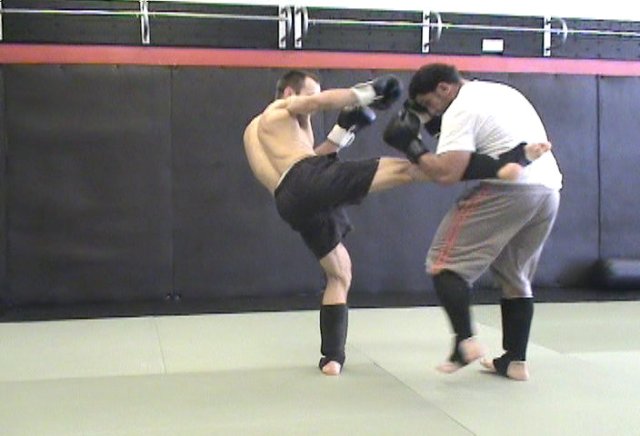
You see, I’ve trained alongside Greg a number of times, and let me tell you. Greg is a lean and mean machine who is well-versed in many fitness disciplines and martial arts. He’s an expert in bodyweight training, weightlifting, kettlebell training, and many other unconventional methods like sandbags, rings, clubs, and others.
He’s also been a lifelong student and a long-time teacher of many martial arts including Muay Thai kickboxing, Boxing, Brazilian Jiu Jitsu, Grappling, Catch, Judo, Sambo, Kali, Panantukan, ROSS, Systema and Izvor, among others.
I think Greg could be likened to a modern-day version of Bruce Lee (i.e. without the action movies), though he would never admit it.
But Greg is not only an accomplished martial artist. He’s also an avid shooter and a tactical firearms instructor. So, he can teach you how to protect yourself with your hands and a variety of weapons – both lethal and non-lethal.
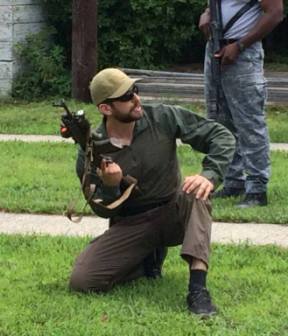 In fact, I’d bet that Greg is just as comfortable teaching you how burn fat, build muscle, and get stronger, as he is teaching you how to survive a mugging or zero an AK-47 rifle.
In fact, I’d bet that Greg is just as comfortable teaching you how burn fat, build muscle, and get stronger, as he is teaching you how to survive a mugging or zero an AK-47 rifle.
Needless to say, Greg is the type of guy who will thrive in the zombie apocalypse – even if he’s blindfolded and has one arm tied behind his back the whole time.
He trains multiple times per day, six days per week, on top of his job of coaching others at his gym (and you’ll learn a lot more secrets to his success in his answers below). He’s also very active in teaching seminars and workshops with both ordinary folks and elite operators alike – on top of sharing his work online.
Greg has also created several unique fitness products and programs, and he has provided some information about them in this interview, at my request. And by the way, I receive nothing if you buy his programs.
Now, I get excited about almost every interview I get to do. But I am extremely excited to bring you this one because it took over four months to complete from start to finish, with much thanks to Greg for providing expert, insightful, and detailed replies to my nosy questions – with no filler information.
So, don’t let the long length of this interview fool you. It’s all good stuff with many nuggets of wisdom for those who will read it carefully. The end result was certainly well-worth the wait.
So, if you want a glimpse into what it takes to achieve incredible fitness – with a boatload of personal examples and practical advice – you will love this interview. And if you get just one key insight, then it’ll have been worth it. But I think you’ll get a lot more than that. I certainly did.
So, let’s dive right in.
Interview with Greg Mihovich about Fitness, Training, Self-Protection, Cold Exposure, Kettlebells, Mobility, Olympic Weightlifting, and More!
Approximate reading time: 40 minutes
JOHN: Can we start by having you tell us a little bit about yourself, how long you’ve been training, and what you do today?
GREG: My name is Greg Mihovich, I’m a professional mobility, strength and self-protection coach. I have been training consistently for about 25 years and teaching professionally for 15 years and counting.
These days I teach a variety of different disciplines, including joint mobility and combat acrobatics, kettlebell/sandbag and bodyweight training, as well as striking, grappling, knife/stick fighting, firearm and survival skills.
Why did you found the Underground Gym and what were you hoping to accomplish that is unique from other gyms and/or training methods?
Underground Gym was founded in 2002 and at the time it was envisioned as an alternative to mainstream big gym chains, where there were no space to move, most of the training was done on the machines and laying or sitting down on a bench, while watching television.
At the time I was heavily involved into competitive martial arts training, such as Grappling, Boxing, Muay Thai and MMA, and I saw a great need for cohesive physical training methodology that would enhance the movement skills and strengthen the body in a functional way that would align with the needs of a martial artist and/or person interested in maximizing their functional fitness for the real world.
At the same time I was working as a personal trainer with general population and athletes and saw a great need for a comprehensive and scalable training methodology that would maximize the training time spent at the gym, while promoting long-term health, vitality and movement potential for the general population and athletes alike.
So I envisioned a concept of a training place where the focus was on being present in the moment during training, and where we would concentrate on the skill and quality of the movement via various functional training modalities, such as mobility, kettlebell and bodyweight training, as well as martial arts practice.
Can you tell us a little bit about your Compound Conditioning system and what makes it unique?
Compound Conditioning System was born as my synthesis of various training modalities and methodologies that I practiced. The name “Compound Conditioning” came due to numerous factors:
- the compound nature of the actual movements that formed the bulk of our training
- the fact that the system is a hybrid, pulling effective training techniques and uniting them under the same basic principals from a variety of different disciplines
- the compound effect of properly structured training, recovery, nutritional and environmental stimulus
Compound Conditioning is a live system, meaning that it is subject to constant refinement and improvement. In it’s current state some of the CC systems key points are:
- Holistic long-term and individual training approach
- Emphasis on skill development and neuro-muscular coordination
- Progressive and scalable approach to movement-based training
- Emphasis on mobilization and development of control (strength) over the entire range of motion
- Integration of rehab and prehab based upon individual needs
- Functional synthesis of bodyweight, kettlebell, barbell, sandbag, band, clubbell, suspension, martial arts and other compound training modalities — quality of movement is what’s important, we select the tool most appropriate for the goals of the individual and their individual parameters
- Full integration of recovery, nutritional and environmental training into the complete systematic approach
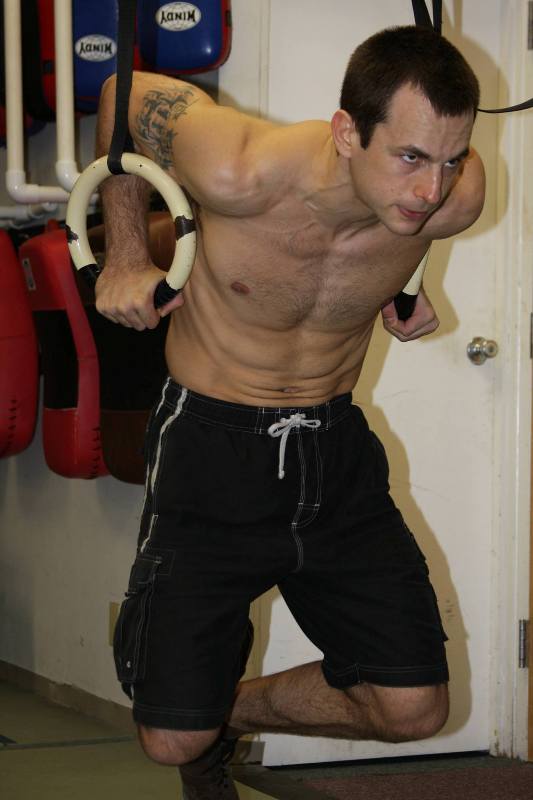
So, you’ve been at this for awhile now. How do you, personally, manage to stay in tip-top shape? Can you provide a summary of your philosophy and approach to health and fitness? And what does your daily routine look like?
Well, it is a journey and I’ve learned to enjoy it. From experience, I understand now, that your performance capacity is more like a curve or rather a wave, rather then a straight line. We are biological creatures and in nature, everything works in cycles. Learning various natural cycles, mastering your own, timing your cycles to the ones of nature and adjusting your workloads and expectations are some of the critical concepts to master for a high level of life-long fitness.
The key to staying in shape for me is consistency in the lifestyle and training.
As far as lifestyle goes, the keys are to manage your recovery factors, such as motivation, sleep, nutrition, hydration, breathing exercises, laughter, sauna and cold water procedures.
My motivation is naturally usually pretty high, if I manage my recovery properly. I’m a very intrinsically driven person, I love training and learning new skills, and I love helping people to get stronger and more capable.
Good sleep habits require discipline from me, as I easily get excited about a book or a video or something and find an excuse not to go to bed on time, but over the years I’ve learned that I feel the best when I go to sleep at a proper time, so I just tell myself like a little kid that it is time to go to bed :-).
I stay on top of my nutrition by planning ahead, as I know first hand, that my training regimen and my quality of life is directly affected if I do not. Over the years I’ve experimented with a variety of nutritional approaches and narrowed down what works for me at this point. I’m very selective about my nutritional choices, although not fanatical, and eat primarily organic fresh wholesome foods with lots of raw foods anywhere from 3 to 5 times a day, depending on what I’m doing.
I include some basic supplementation, such as rodiola rosea, turmeric, maca, protein shakes, probiotics and some others, but I’ve learned from experience that supplements only supplement a good basic nutrition regimen.
I’ve been doing various breathing and meditative exercise for a very long time, since a teenager, and by now lots of them are an integral part of my being, but I do still perform some more concentrated practices. It helps me to calm myself down or amp me up when necessary, manage stress, decrease my heart rate in between bouts of intense movement and helps my brain to be more connected to my body and movement.
I attribute a great deal of my vitality and well-being to cold and contrast showers and cold water plunging that I’ve been practicing for over 20 years at this point very consistently, as well as fairly regular use of sauna and grounding practice. Those procedures help tremendously with immune system strengthening, as well as improve thermoregulation, skin condition and recovery. Those procedures are an integral part of Eastern Slavic health practices and go back many thousands or years.
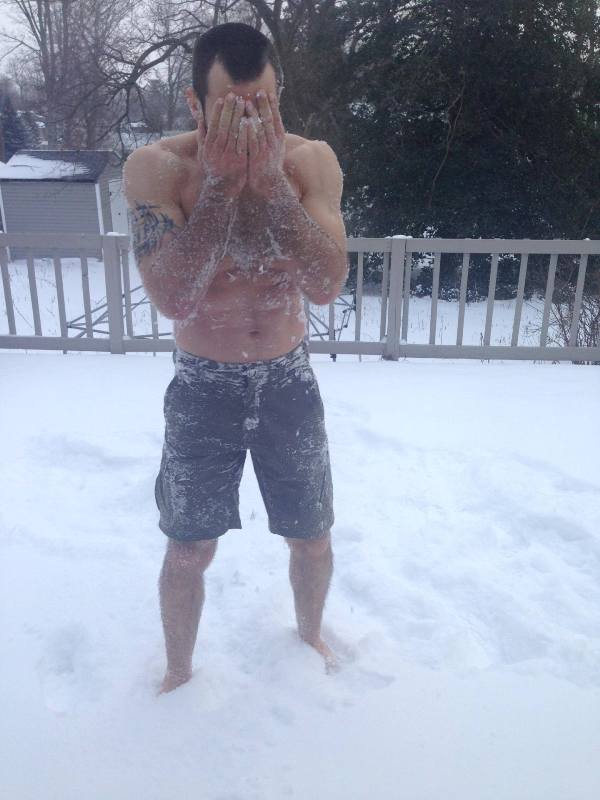
Massage and various forms of neuro-muscular corrective training are also a big part of my life-long training approach. We do a variety of body work within the scope of our martial arts practice, with roots in Slavic and Thai health and martial arts traditions, but I also regularly visit a body worker of a very high level that I’m fortunate to know, as well as a Z-health and FMS practitioner that help me to optimize my performance and overcome injuries.
My daily routine begins in the morning with me waking up and stretching in bed, then a tall glass of water with a touch of apple cider vinegar, some fresh squeezed lemon and a probiotic supplement, followed by a trip to the bathroom and a contrast shower. I like to eat a solid breakfast, as my metabolism is very high and I usually have a full day of physical and mental activities ahead of me.
I start training people around 9 am, teach a couple of training sessions, then train myself from 11 am to 1 pm together with a select group of long-term students. Currently, three days a week are dedicated to mobility, strength and conditioning training, so the first hour or so is usually that modality, followed by an hour of combative training, whether it is striking, grappling, blade fighting, stick combat, firearms or a combination of those skill sets. If there is no strength training that day, then we just work on combatives the whole time.
Then comes my first lunch, usually a shake, followed by either a nap, reading, walk in the park or office work, depending on what is going on that day or that week. After that I have my second lunch with some sort of wholesome food.
I like to lay down and chill out after I eat for 10-15 minutes in order to relax and to allow my parasympathetic system to take over. I feel like it helps a lot in optimizing digestion and metabolic processes.
The second lunch and a little chill out time are then followed by my afternoon coaching sessions.
I engage in combative training one more time in the late afternoon or evening, depending on the schedule and what am I doing that day. This training is either conducted at the gym, outside or at some other training location, where often I turn into a student and visit some other training facility, working with my coaches on either Brazilian Jiu Jitsu, Sambo, Panantukan and Muay Thai, knife combat or shooting skills.
Then comes another contrast shower, dinner, hanging out with friends and my girlfriend and preparing for the next day ahead.
On weekends I often go to different seminars or wilderness adventures and so the schedule varies accordingly.
One of the things I’ve always admired about you is that you come across just as much as a good student as a good teacher. I think this sets you apart in our industry. What do you do differently from your average fitness coach?
I love being a student and soak up new things, practice them and then add to my own systems. For me, balance between teaching and learning is very important to my happiness.
I learned early, that if I do not make time to train and learn myself, it will be taken by some other activity or me coaching other people. And I love coaching, but I feel like I want to practice what I preach and so, if I do not, it reflects on my coaching delivery. When I strike the right balance between a student and a coach I’m at my best personally and professionally.
But the opportunity to learn does not stop with just taking classes, going to seminars, reading books and watching videos. I’ve learned so much from coaching as well, for example by finding different ways to scale an exercise to make it more appropriate for an individual or from working with a group that has different levels of proficiency and making the training material relevant to everyone present.
Okay, I’ve seen you doing all kinds of high-level calisthenics, weightlifting, kettlebell training, gymnastics, acrobatics, many different martial arts disciplines, and weapons training, among other things. Why have you taken a more broad approach to physical training instead of specializing in one or two disciplines like most fitness pros do? And what’s the value of this? Should more athletes and fitness enthusiasts strive to become competent in a wide variety of fitness and movement disciplines?
Well, haha, I’m a Gemini and that is part of my nature to be curious about many things :-).
Life, movement and combat are very diverse and so I see a lot of value in training different movement skills, practicing in various ranges of combat and being able to adapt your skill sets to a particular environment. You could compare it to MMA or Special Operations, where an a fighter or an operator has a few specialties, but at the same time has to posses a wide pallet of skills in order to even being able to employ his primary skills.
I draw some of my inspiration by our ancestors and great men of the past — those that could speak a few languages, sail and navigate a ship, travel across few continents, survive in many different types of terrain and harsh conditions, fight battles with many types of weaponry and tactics, build a house from scratch from natural materials, raise a family of 5-8 children and write a book– and all within one lifetime!
I’m also very inspired by many great martial arts and self protection coaches, such as Dan Inosanto, Martin Wheeler, Rich Graham and Daniel Sullivan for example, who mastered many different disciplines on a very high level over the course of their lifetime and still to this day, even though they could just rest on their accolades continue to learn new skills and not just maintain the old ones.
I’m an eternal student and I train for the long term, for life basically, so I’m not in a rush anywhere and I enjoy the process. It took my entire life for me to arrive at this point and to accumulate all those skills, it did not happen overnight and I did not practice all of them at the same time simultaneously.
Many times, when learning a new skill set, I go into a beginner’s mindset and put on a white belt either literally or figuratively speaking. I try to learn the new skills with an open mind and often put the other skill sets on the backburner so to speak, or basically train them with just enough frequency to maintain the skill, while I’m focusing on acquiring new ones.
Although you would be surprised how much improvement you can make practicing something once or twice a week consistently over time. Later, I begin to integrate new skills into my previous skill sets and make it a more complete system.
In the beginning, all of these different martial art disciplines and strength/conditioning systems were very different to me, sometimes even feeling like polar opposites. But as I have been sorting through them and was learning and mastering the universal principals behind movement patterns, optimal biomechanics, power generation, shock absorption, angles, tensegrity, structure, balance, mobility, stabilization, various rules of engagement, environmental factors, tactics and strategies, physiological factors and many others it became just movement and just fighting.
One of my goals in martial arts, outside of ability to defend myself and my loved ones from harm, is to be able to walk into any training facility, with any fighting discipline being taught there, from striking to grappling to weapon based systems and be able to hang/spar/drill/flow/move around on the good level with medium to high level guys. I’m ok with leaving my ego at the door and I remember why am I doing this — to become a more well-rounded fighter.
It is totally ok to tap in training, get your butt kicked and to challenge yourself. When you are forced to fight for real for your life it will most likely not be the person from your martial arts gym, so you need to be ready for all kinds of movement dynamics, body types and fighting strategies.
In Soviet sports science, which was very advanced as they devoted lots of resources for research of optimal methods of human performance, there are concepts of GPP and SPP. GPP is basically General Physical Preparedness or the broad spectrum of baseline psychophysical skills and SPP is Specialized Physical Preparedness or, in other words, specialized training to enhance some very specific skill sets.
They have figured out that the better the GPP foundation is, the better some SPP training and skills would be absorbed by an individual.
I consider my early years as a practitioner as my GPP education. It took me a while to figure stuff out and to sort through what works, what doesn’t and how it works exactly, but I’m not in a rush anywhere, I have my whole life as I’m a life-long practitioner. Now my training is a lot more specialized, yet I still go back and work on my GPP skills all the time.
Another topic is overtraining and over-use injuries. Yes, people who compete in a particular sport need to concentrate on that sport primarily, but they also pay for it with overuse injuries and lots of wear and tear from repetitive movements performed at high intensities.
At this point in my life, although I have competed in nine different combat sports and a multitude of strength and sports team disciplines in the past, I do not compete anymore, other then in shooting sports and occasional adventure races. I train for life, for health, to be well rounded, to be max capable and to have fun.
At this point, after way over a couple of decades of training under my belt, I know what I’m looking for in each individual discipline and whatever it is that I’m doing and I select the appropriate tools for the job at hand. I’m basically practicing MY SYSTEM of movement and fighting all the time utilizing common principals of human movement and psychology.
Would I recommend the same route for others? Not necessarily, everybody’s journey is unique and I certainly believe in getting even better in what you are good at. But at the same time, how would I know that I’m a decent grappler, if I would always stuck to just Muay Thai? Or how would I know how deep the knife skills go if I would never study Sayoc Kali? Or got stuck to my teenage misconception about limited benefit of kettlebell training? Hard to imagine…
Explore, find what you enjoy doing, keep practicing and get good at it, whether it is one thing or many, that’s my advice.
You wrote in a recent interview for WarriorFitness.org, “I was always a believer that a higher purpose can override pretty much anything, and for me the primal reason to get stronger, more coordinated, better conditioned, more efficient, achieve better plasticity and mobility was always so I can become the best martial artist possible from a long term perspective. In other words, I was seeking out and selecting training methods and techniques that improved my functional abilities, while improving my health and longevity in the long run.” You’ve always seemed to focus more on movement training and skill development, rather than traditional strength and conditioning and bodybuilding. Why is that?
I figured, that while I’m relatively young and my nervous system has more plasticity and adaptability, as well as I can sustain a higher volume of practice, I would focus on acquiring and mastering more complex movement skills, as they are more difficult to master when you are older.
Later in life I can concentrate more on muscle building, as my ability to sustain a large volume of training will be less and the priorities will shift to maintaining good healthy level of lean muscle. I feel like by making my nervous system work with more elaborate movement patterns I will be able to acquire decent appropriate levels of strength later on.
We will see how it will work out, the time will tell.
What are some of the keys to functional fitness that you think most people miss?
Naturally, most people are heavily influenced by modern culture of instant gratification, “five minute abs” and other quick fix solutions.
While 5 minutes of consistent practice certainly has lots of value, the point that I’m trying to make here is that — we need to focus on the long term perspective and lay down a proper foundation of mobility training, learning solid body mechanics and often enough, correcting various corrupted movement patterns, as well as optimizing one’s lifestyle before jumping into some high intensity training protocols, if we are serious about acquiring meaningful results that stick around and last a lifetime.
What that means is taking a personal responsibility to your health and fitness, which implies that it is a life-long investigative journey.
What are some of your biases when it comes to training and why?
I was heavily biased about many things in the past, but as I was learning new things and opening up my perspective that changed. For example, when I was a teenager and a competitive powerlifter I thought that kettlebell guys were very one dimensional — little did I know until I started actively training with kettlebells and found out that they are amazing tools for all-around fitness if utilized properly.
Right now, I’m pretty open to a variety of training approaches and I understand that there are many ways to the same mountain top and different people will gravitate to different methods due to many factors. So do whatever you like, is sustainable and makes you strong and healthy. Keep an open mind and try new things, but also stick to your strong points.
I’m just biased against intensity training for intensity’s sake, without putting thought into proper development of foundational motor skills and thus undermining the health of a practitioner.
What are some of your preferred training tools and why? Do you have any go-to exercises that you think most people should do, but don’t?
These days I choose training tools based upon their effectiveness towards specific training goals and objectives, rather then simply prescribing to a particular “party line”. Certain tools are just better for certain things, but at the end of the day, what’s most important is what you do and how you do it with that tool that actually matters.
They say in martial arts that a weapon is just an extension of one’s body — I tend to think the same way about fitness tools. Very similar to the Marine combat training philosophy of “one mind any weapon”. I look at the movement that I’m doing or teaching first and then select the most appropriate tool for the job.
For example, kettlebells are amazing training tools and one of our staple training exercises are many different variations of Turkish Get Ups, which we commonly perform with kettlebells. But if someone has a shoulder mobility limitation which limits their lockout position and makes them compensate heavily with their lower back to “get it done”, I make them shoulder a sandbag instead, which keeps the movement almost identical body-wise, but takes away the back compensation.
With that said, I like to utilize a variety of tools for strength and conditioning training, with some of my favorites being barbells, kettlebells, sandbags, med balls, abdominal wheels, gymnastic rings, freestanding pull up bars, stall bars, parallel bars, maces and clubs, various gripping devices, humans, mats and few others.
As far as my absolute favorites? That would be bodyweight, rings, pull up bars and kettlebells for their amazing versatility. I love partner training exercises as well that challenge multiple planes and a variety of motor skills.
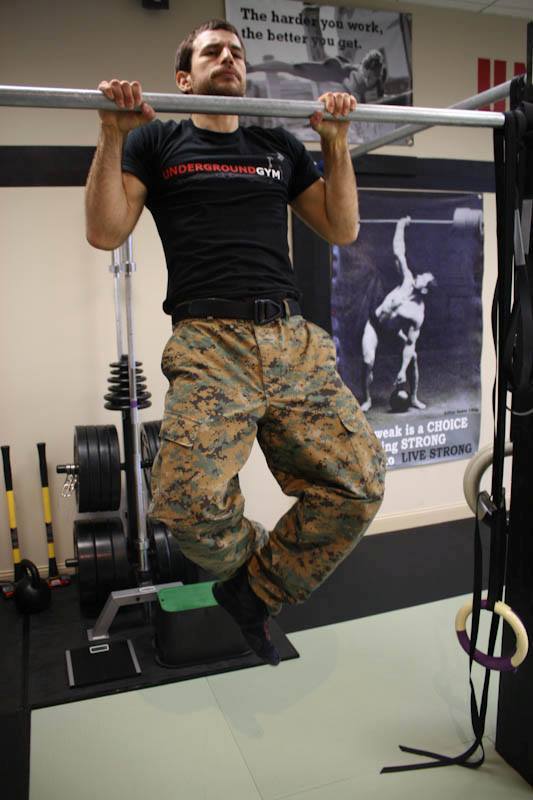
Why is mobility training important and how is your approach different from some of the others out there?
I consider mobility training to be foundational for many reasons. Just some of them are listed below:
- Mobility training lubricates the joints with synovial fluid, helps to remove toxins and prevents arthritic build up
- Mobility training enhances basic coordination and body awareness via progressively more challenging drills and exercises
- Mobility training doubles up as a useful warm up, that does not stop just at merely increasing your body temperature, but simultaneously improves your movement skills
- Entry level mobility training is very gentle on the body, yet enhances all bodily systems and creates a platform for more intense training methods down the road
- Advanced level mobility training incorporates coordination and movement skills, strength, flexibility and conditioning into one package
- Mobility training also serves as a great active recovery method, because speeding up your metabolism and increasing the blood flow in the tissues through application of moderate exercise allows you to recover a lot faster and suffer much less from excessive soreness
Everybody should perform some sort of daily mobility training if they want to be healthy and physically capable for a long time — one day it will be as commonplace and obvious as brushing your teeth is today.
If you would like to check out a comprehensive training guide on mobility and ground-based movement please check out my CAT (Combat Acrobatic Training) System here:
CAT1: http://undergroundgym.com/CAT1/
CAT2: http://undergroundgym.com/CAT2/
So, I hear that you like kettlebells. And I’ve seen you do some impressive kettlebell feats. Who should train with kettlebells and what are some of the best practices for kettlebell training?
Yes, kettlebells are amazing and very versatile training tools. With just one of a few bells one could work pretty much every facet of fitness — from mobility, strength and power to conditioning and activity-specific training.
I think everyone, from athletes, fireman, law enforcement and military to moms, gym enthusiasts, teenagers and senior citizens should take up kettlebell training. The keys, of course, are to get proper coaching in order to learn how to do it right and to approach it in a progressive and intelligent manner and with loads and intensity that is appropriate for an individual.
The biggest benefits of proper kettlebell training are that it builds solid body mechanics and applied knowledge of optimum leverage and stabilization principals, while maximizing metabolism, building muscle, burning fat, achieving great levels of cardiovascular fitness and work capacity and conditioning the body from the inside out with great emphasis on the core, lateral and posterior chains. Your ability to grip and hold on to things during dynamic action will dramatically increase as well.
There are many ways to train with kettlebells effectively, I would suggest finding a good instructor, at least to get the basics down.
The key core kettlebells exercises to master are Turkish Get Ups and Swings — everyone should invest some time to those lifts, the outcome will be amazing.
Best way to learn Turkish Get Ups is to break it apart into manageable chunks, such as Half Get Up to Bridge, Bridge to Thread, Half-Kneeling Windmill and Overhead Lunge. Practice those as individual exercises first. At later stages of training it will be integrated into a full lift, but those partial lifts will be great training drills for years to come.
Swings are a foundational lift to master ballistic movements utilizing the Hinging movement pattern and are a key to more advanced exercises down the road, while a tremendous exercise in its own right.
Later you should also learn Cleans, Presses, High Pulls, Squats, Windmills and Snatches.
In the more advanced stages you can learn kettlebell juggling, which is one of my personal favorite training modalities due to its fun factor and tremendous benefits for multi-plane strength, power and all-around conditioning.
We usually spend the colder months of the year training basic kettlebell lifts and their variations along with an array of bodyweight drills and in the warmer months we transition outside to juggle kettlebells.
How do the Olympic lifts fit into a training program, and who should train with them?
You know, with Olympic lifts there are usually two camps: one is heavily “pro-” and the other one is heavily against. I used to be in the heavily “pro-” and maintained that with proper coaching anyone could learn the lifts and execute them safely and with good results.
However, with gained experience over the years of practice and coaching, I came to a conclusion that the truth is somewhere in the middle.
Most individuals today lack the proper foundational GPP training, and lots of times, also lack the mobility and general fitness to perform Olympic lifts properly and safely. It takes lots of time to develop the required mobility and to develop the quality of the tissue supporting the movement and the loads.
Now, I’m all for a long term approach to training and for taking time in developing the foundation. But for the majority of the general population the foundation of strength and conditioning would be better laid out with bodyweight, kettlebell and sandbag training methods, while Olympic lifting with broomstick, bars and light weight could be used to work on the mobility aspect.
The main reason is that barbell when held with two hands is controlled via 2 degrees of freedom, or is often called “two-dimensional”, as opposed to dumbbells being three-dimensional and kettlebells being four-dimensional. As with anything, two-dimensionality comes with pros and cons.
The pros are that it develops very precise lifting mechanics and subsequently develops a great deal of strength-mobility, as due to the strict requirements of barbell control and positioning it is the barbell’s way or the highway, so to speak.
The exact same reasons are the cons of the system. One needs to perform the lifts within a very narrow optimal groove, giving little room for individual adjustments due to individual variations in body structure, past injuries or muscle imbalances. Due to the highly technical nature of the lifts, the reps are kept very low, the rest in between is long and the practice session is longer on average as well.
Due to the fact that all of the lifts involve holding on to the barbell with both hands it often leads to muscle imbalances, if unchecked.
What I have found to be effective and sustainable for the majority of people is a working compromise: performing Olympic lift variations with kettlebells, sandbags and other objects, even humans in some sport-specific training applications. The specificity and restrictions of the barbell are removed, while the benefits are maximized.
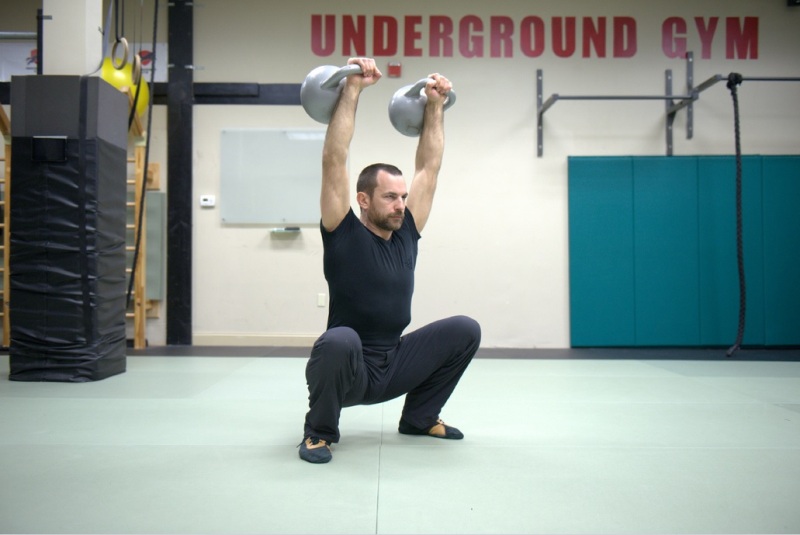
Kettlebells are a lot more forgiving in terms of range of motion requirements for the lifts and actually, the off-set center of gravity helps to get the proper ROM by pulling and guiding there.
The requirements for wrist strength mobility are lessened significantly, while simultaneously increasing the demands for wrist stability and grip strength in general. With a barbell, many exercises, which require to rack the bar to Front Squat position are restricted for most people due to poor wrist strength-mobility and can be a limiting factor in proper weight selection, could result in altered mechanics, or modified anyways.
With kettlebells, sandbags and other similar objects, due to the lighter weight and more “wiggle room” in the trajectory and technical performance of the lifts, more reps could be performed and with less rest in between, which leads to higher work capacity development faster.
Yes, a well-trained Olympic lifter has that capacity already due to well thought out GPP phase he/she underwent earlier and he/she routinely performs additional training to maintain that GPP level. But most people do not meet those requirements.
With kettlebells and lighter sandbags, the lifts are performed with one arm or two arms holding weights at a time, with an off-set center of gravity or sometimes even on one leg, which when done correctly leads to correcting and preventing muscle imbalances.
Kettlebells, clubs and sandbags allow you to work on bigger ranges of motion through the exercises, work multiple planes of motion and access challenging end-range and beyond the range strength-mobilization, rehabilitative and injury-preventive exercises. Olympic weightlifting is mostly a single plane activity.
Kettlebells, sandbags, clubs and other unconventional strength training tools are much more transportable and accessible, as opposed to a lifting platform, bar, squat rack and 500 lbs of plates set up. Could you do Olympic weightlifting with a bare set up — yes and I’ve done it, but kettlebells and sandbags outshine that modality in transportability and accessibility departments.
Another thing is the ease with which kettlebells lead to activity-specific (I prefer that term to sport-specific) movements, after going through the GPP phase of course. One knowledgeable about the kettlebell mechanics and the specific activity motor skill and movement requirements can easily construct some exercises that train the joint angles and planes of motion very similar to that activity due to the circular/spiral nature of kettlebell lifting dynamics. Olympic weightlifting is a GPP activity by default, unless one is an actual Olympic weightlifting competitor.
Those and the other factors steered me to get away from classical Olympic lifting and perform modified versions of the lifts, as well as a host of their multi-plane cousins and other lifts with kettlebells, clubs, sandbags and other training tools. I find the majority of people that I train do better on that type of regimen.
Having said that, I love Olympic weightlifting and I have really enjoyed studying it and have dedicated lots of training hours to it in the past. There is a certain rush in Squat Clean racked and stood up with smoothly and it feels awesome to dump a barbell on the platform after a well executed lift.
This was not some sort of a political statement, just my opinion and my experience with the subject from my perspective. I recognize that there are many paths to the mountain’s top. There are a lot more qualified people then me to talk about the specific aspects of Olympic weightlifting, like my OW coach from the past Mike Burgener. My perspective is a perspective of a guy who trains regular people, law enforcement, fighters and searches the methods most applicable to them.
If someone has the proper GPP, range of motion is adequate to perform the lifts with the barbell correctly, the gear to perform the lifts and the knowledge to implement it correctly… I say, fantastic, do it if it works for you.
If you do not have those things and still want to do it, fine, work at it incrementally and work diligently in a scalable and progressive manner towards your dreams.
But in my opinion, most people will benefit more from investing their time into kettlebell training and similar modalities.
So, when we were eating sushi and most of our group was drinking sake in that dimly-lit restaurant in Stamford, CT (after the Ryan Lee fitness conference in 2006), my buddy leaned over to me and said about you, “that guy, Greg, is one tough SOB. I wouldn’t want to mess with him.” For the record, I was never planning on messing with you, or anyone else that night, but I’ve since learned that what my friend said was absolutely right. You’ve spent a lifetime studying a broad spectrum of martial arts, self defense, and other combat disciplines. Now, for someone who has little to no martial art and/or self defense experience, what process would you recommend for getting started? And what is the most effective way to learn to protect yourself (and do you have different advice for short-term versus long-term development)?
I recommend finding out and setting very specific goals behind your reasons to train in martial arts and then model your training accordingly.
If you train for competition, then your training needs to be fairly specific to the type of competition, supplemented with auxiliary training that supports the primary activity. For example a Jiu Jitsu athlete would benefit from training Jiu Jitsu primarily and supplementing it with Judo, Sambo and Catch. A Muay Thai fighter needs to train Muay Thai and supplement it with Boxing, K-1, San Da and Greco-Roman clinch.
If you train for self protection (I prefer that term to “self defense” due to its proactive nature), then your training has to be more diverse and include legal knowledge, situational awareness, psychology, environmental training, first aid, group combat and multiple attackers, tactical training, force multipliers, survival skills, improvised weapons and conventional weapon training such as blades, sticks and guns.
I also think that self-protection oriented folks should cross-train in “sport” combat systems, such as Muay Thai, Boxing, Sambo, BJJ and others. It will greatly enhance their gross-motor fighting skills, improve conditioning, toughen them up, improve combat-specific attributes and prepare for full contact nature of combat.
Self-protection should also include healthy long-term lifestyle choices due to, you know, self-protection. A person that wants to be an asset, rather then a liability in a critical situation needs to take care of his/her well-being and maintain a healthy regimen of physical training, nutrition and rest.
I think the most effective approach to combat preparation in modern times has to be hybrid in nature and address the full spectrum of close quarter combat-related skills at multiple ranges, from projectiles, striking, clinching and grappling, single and multiple opponents, with and without improvised or “conventional” weapons.
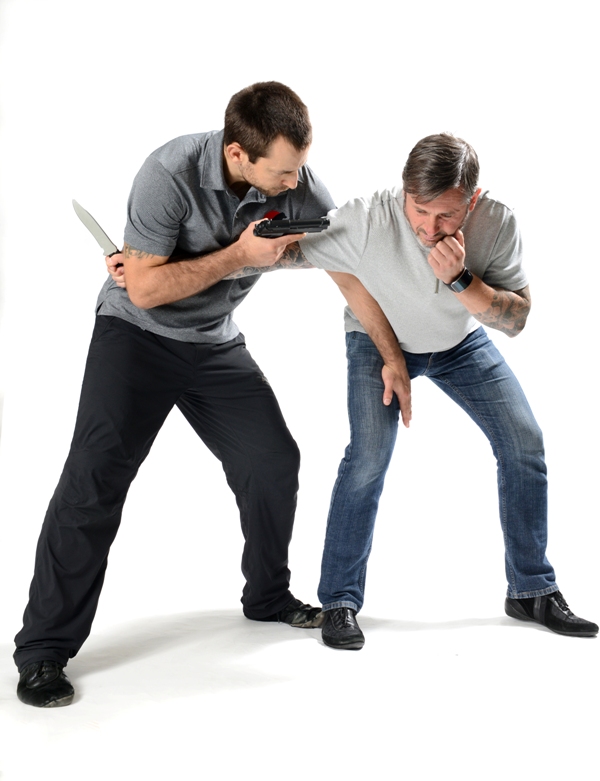
In ideal conditions we would always choose to wage combat on our terms, on our call and on the terrain of our choosing as an overwhelming assault. However, especially for civilians, it is not always the case and we should be ready to fight under any conditions.
The element of surprise might not be on our side, as professional predators get to choose the time and place, although awareness skills and staying away from trouble can often do much more than actual fighting techniques.
But not everyone can stay out of trouble, as there is also a different breed, the one who runs towards the trouble because it is his/her duty to protect the others. I train many of those individuals in the line of duty to serve and protect and my hat is off to them for their readiness to do so. But anyone could be in that position, having to defend a loved one or people he/she cares about. Be ready.
It is very important to not only practice various tactics, but to pressure test them simulating actual combat conditions all close as possible. Having said that, the health and longevity of the practitioner should be a very real concern, so a variety of methods should be used to keep everyone as safe as possible, yet as close to actuality as possible. Those protective measures would include protective gear, modified speed, reduced arsenal, simunition rounds, training weapons, etc.
We have to remember, that it is impossible to simulate the reality of combat exactly 100%, due to its extreme violent and chaotic nature. But we can isolate bits and chunks, increase our awareness, train to implement various strategies and tactics, build our ability to perform under bigger and bigger stress, hone our capacity to move, communicate and fight effectively and efficiently and therefore, prepare ourselves the best we can.
People who train for self-protection also need to realize that there are different types of violence and different type of responses that are tactically, morally and legally justified under those circumstances. That’s why having good awareness skills and a diverse arsenal also helps to steer yourself free from prison and questionable fame as a trouble maker.
One type of violence is more spontaneous and tribal affirmation based, and often involves others looking and generally speaking is the least dangerous one, although you could end up with life-changing injuries and death as well, even due to a cracked skull by way of falling and hitting your head on pavement. One needs to be careful here with the extent of trauma administered during the engagement. And use psychological, verbal and awareness skills to avoid getting involved to begin with. If the “monkey dance” takes place, control your temper and control the situation from escalating a potentially bad one to a full blown disaster if someone will get seriously hurt. But do not underestimate anybody or any situation and be ready to protect yourself at all times.
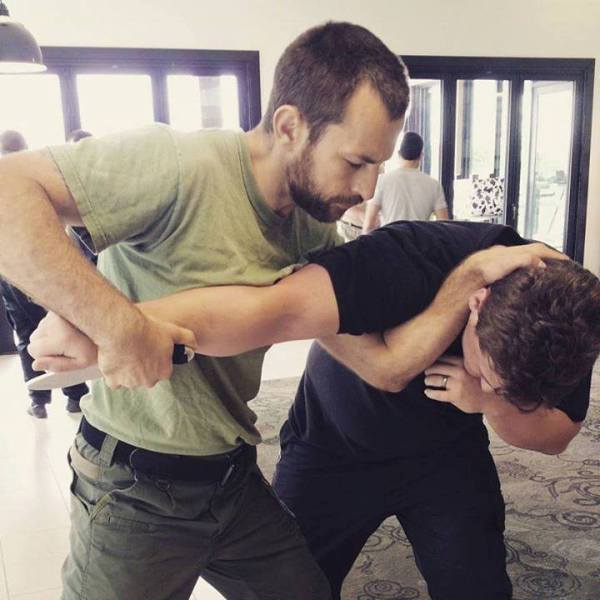
Another type of violence is more predator-based or criminal/terroristic in intent. It often involves prior casing or stalking and has no witnesses and is either an ambush or somehow else has the element of surprise on the side of the assaulting party.
Criminals and terrorists are not looking for a fair fight or for a fight at all, they are looking for lunch or a large body count. Your awareness, ability to react under stress, ability to scramble quickly, ability to carry and access weapons legal in your jurisdiction, ability to use improvised weapons, ability to be fluent with emergency trauma treatment, especially large bleeding, and generally over-match the level of violence you are facing, while maintaining a cool head for quick critical decision-making come to the forefront here.
Yet another one is more sheepdog-based and often involves a violent drunk relative or some other member of the society that does not pose extreme danger, but if left unchecked things could spiral out of control fairly quickly. More restraining type and grappling control techniques and strong verbal and awareness skills are appropriate here.
If all these advice seems a bit like a very big task to a complete beginner, well, that’s because it is. A student feels the same way before just starting the university program. And after the university is over, the real schooling just begins…
So my advice is, keep full spectrum preparedness as a long term goal in mind and begin to accomplish one thing at a time. Start getting fit and healthy. Depending on the amount of time you have, begin studying a martial art, or possibly cross-training in a couple of them, preferably a striking and a grappling system.
Remember to realistically assess your capacity in a worst case scenario. For example, three armed intruders in your house and you are not in the best condition due to a sudden injury or disease. That line of thinking, and plenty of real-world and pressure-testing training experience brings us to the fact that all realistic self-protection systems always use various weapons, either conventional or improvised, for effective self protection. That’s just a fact of life. You have to check the laws in your area and train accordingly.
Yes, unarmed skills are very important and form a skill set that is invisible and is always with you. But ability to employ and transition to and from weapon to weapon system greatly maximizes and increases the consistency of your realistic chances of survival in a case of an armed criminal assault.
So get involved with a weapon-based martial art, such as Kali. I’ve studied Dog Brothers stick fighting, Blade Smart knife/ stick fighting system and Sayoc and Atienza Kali and I can highly recommend those to self protection minded practitioner.
Also, research the firearm related laws in your area and get your license if required to do so. Get some training from the best instructors you can find and afford, master the safety habits and keep training regularly. Stay current with the laws and regulations in your area, maintain your license, store and transport your weapons safely and responsibly.
Get some practice replicas, either laser-based and/or airsoft models and maximize your skills by more frequent practice without a trip to the range, situational training, as well as actual force-on-force practice with appropriate safety gear and safe projectiles such as airsoft or simunition.
Make a habit to attend at least bi-annually a combat trauma and first aid course, get proficient with emergency trauma care and keep your skills current. Create and stock medical kits for every day carry, car, work, house, gym and range. Keep the equipment current with the expiration dates and keep on top of your medical skills.
Begin practicing awareness skills and integrating them into everyday life. Sit with your eyes facing the entrance, check for possible emergency exit routes, carry a concealed weapon where it is legally possible to do so. In case of non-permissive environments, carry a tactical pen and a tactical flashlight and get adept at identifying makeshift and environmental weapons of opportunity around you.
Think ahead of possible scenarios you could encounter in a particular environment and make some basic preparations ahead of the time. Arrive prepared.
Play memory and attention games in places and try to soak in more details that you can remember. Be alert, put the phone away and be present.
Just like mastering anything new — you will have to put lots of attention to it initially, but once you get a good hang of the skill set, it becomes more automated and requires less of your attention span, and eventually becomes second nature if practiced long enough. But beware of complacence and invincibility syndrome. Stay vigilant.
Your safety and that of your loved ones is in your hands. Take responsibility, make a difference, be an asset and do some “big boy talk” with yourself and get very clear on what you are willing to do.
I noticed recently that you’ve been studying Wim Hof’s methods of training (e.g. cold exposure, breathing exercises, etc.). Namely, I saw you sitting in a giant ice bath with a bunch of people singing, Somewhere Over The Rainbow. What have you learned from your experience with the Wim Hof Method? And is this something you can recommend to your average health and fitness enthusiast?
My experience training with Wim Hof was amazing! He is a real man that has found his purpose and pulls no punches in his delivery of the material. And his positive mental attitude and enthusiasm is very contagious! It was great to get an inside look into his environmental training methodology and to communicate with someone who has taken those ideas and practices to the edge of our current abilities as humans.
It was also amazing to hear that he validates his methodology with scientific tests and thus reaching out to the mainstream and a wider audience. He is a fascinating character, I love his passion and highly respect his message and I’m very glad that I’ve met him and are getting more familiar with his work.
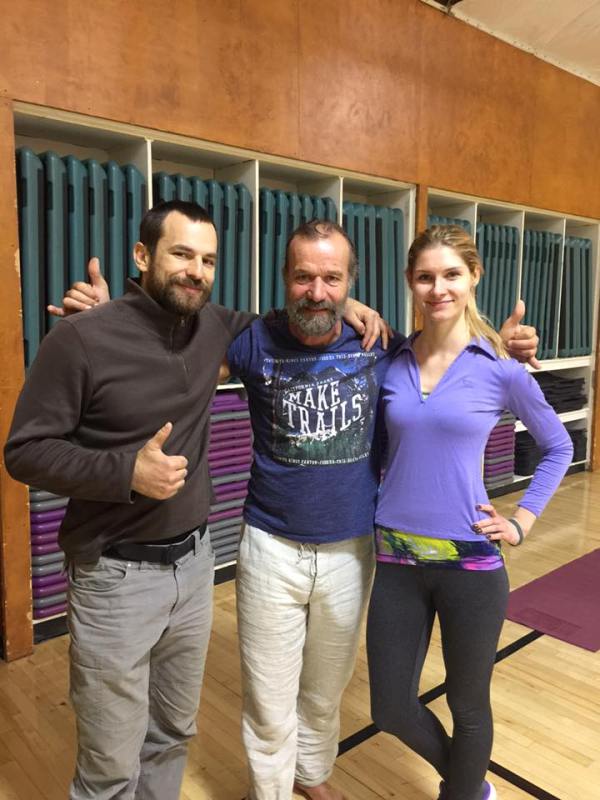
Before meeting Wim Hof I’ve been practicing cold water plunging and conditioning in various forms for over 20 years. My initial exposure to such methodology came from the work of Porfiry Ivanov — he was a Soviet equivalent of Wim Hof, and he started doing it back before the Second World War and has millions of his system’s followers all over Eastern Europe. Porfiry was in shorts year round, all the way through the brutal Russian winter, exposed himself to cold water twice daily, employed a combination of breathing, physical movement, intermittent fasting and moral conduct principals for a complete health system.
Despite the effectiveness of his methodology, millions of followers and astonishing feats of human mind and body that he performed, he was prosecuted many times by the Soviet government, as it considered his work a religious cult and a threat to communist ideas.
In one of his feats he was captured by the Nazi invaders, who heard of his unusual abilities, and he was tied up, naked and wet, to the front of the train car in the winter and transported from one town to the other in that manner. He survived and was able to escape further captivity.
Despite the State prosecution and general resistance to his influence over people lots of his ideas and practices were implemented and even made their way into official practices. Like my kindergarten for example, had a program where every winter we spent 5-10 minutes walking outside barefoot on the snow in order to strengthen our immune systems and ability to withstand a cold environment.
My other exposure to environmental training came from traditional Slavic use of saunas, snow walking and ice hole plunging. Sauna use has been widespread on Slavic territories for thousands of years as a form of environmental conditioning, personal hygiene and recovery aid. It was due to the saunas that Slavs never had a plague that was so devastating for Europe.
The hot environment of the sauna is a perfect counter part to cold for a complete environmental training “work station”. The heat raises the body’s metabolic process, relaxes and releases restrictions in the tissues, exercises the heart, improve the body’s thermoregulation ability, and opens up the pores in the skin to allows the toxins out.
The cold, following the heat treatment, either in the form of cold shower, cold water plunge or rolling in the snow, is a perfect antagonist to the heat. It closes the pores, thus forcing the toxins out and closing the doors shut for drafts and infections. It mobilizes the immune system response and strengthens it. It reduces inflammation and speeds up recovery. It teaches you to control your breath and to control your fear and panic. You get to see a direct carry over of your mental attitude to your performance in the environment and what generally seems to be like a torture becomes actually a rejuvenating experience.
I would definitely recommend everyone to look into environmental training and upon careful research, implement it into your practice. You will be a stronger, more resilient human for it.
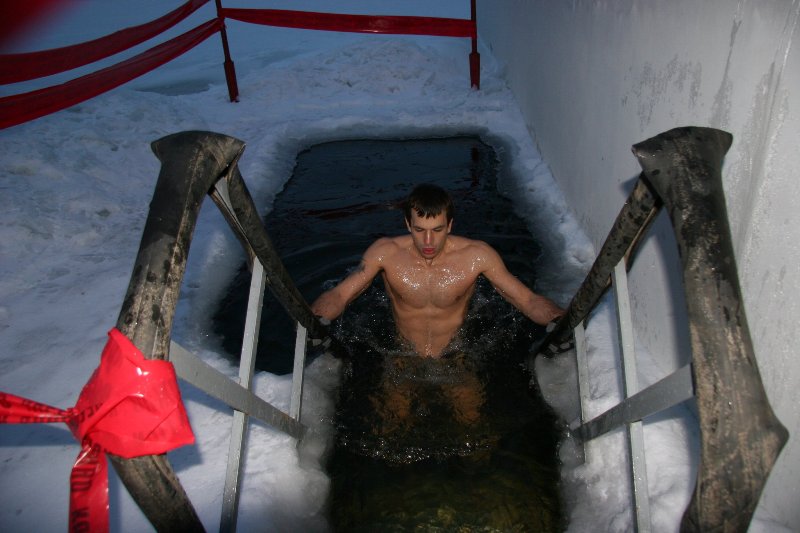
Note: If you found this interview interesting, helpful, or inspiring, please share it with your friends!
Now, Greg, where is the best place my readers can find more information about you and your work? And can you please tell us about your fitness products, too (DVDs, etc.)?
You can find me on a few different platforms, including:
http://MaxCapable.com, which is my new exciting project that a ton of great content on mobility, strength, combat and survival training. It will launch in the summer of 2017.
http://UndergroundGym.com, which is the website for the Underground Gym in Red Bank, NJ as well as instructional downloads and DVDs
https://gumroad.com/greg_mihovich, which is the direct link to my instructional downloads and DVDs
My three most popular products are:
Animal Conditioning Bodyweight Training System — one of my original DVDs, very encompassing training guide for over 84 animal-like multi-plane bodyweight exercises. You can get it here: https://gumroad.com/l/GHPpd
Combat Acrobatic Training (CAT) System, part 1, Warm Up and Basic Skills — comprehensive guide to ground based mobility training for all major joints in the body. You can get it here: http://UndergroundGym.com/CAT1
Combat Acrobatic Training (CAT) System, part 2, Ground Mobility and Movement — comprehensive guide to ground based movement, progressive bodyweight training system. You can get it here: http://UndergroundGym.com/CAT2
My newest informational project is a collaboration with Rich Graham, Navy SEAL veteran. We have produced “Dynamic Shooting Movement Fundamentals” downloadable video study guide.
DSMF program goes into great detail into proper movement with firearms, and has dozens of drills that will transform your movement potential behind the gun and allow you to be more efficient transitioning from position to position, avoid injuries and improve your shooting performance for target practice or self protection. It will be ready by summer 2017 and you can find it here: https://gumroad.com/greg_mihovich and http://MaxCapable.com.
Thank you, and live strong!
Greg Mihovich
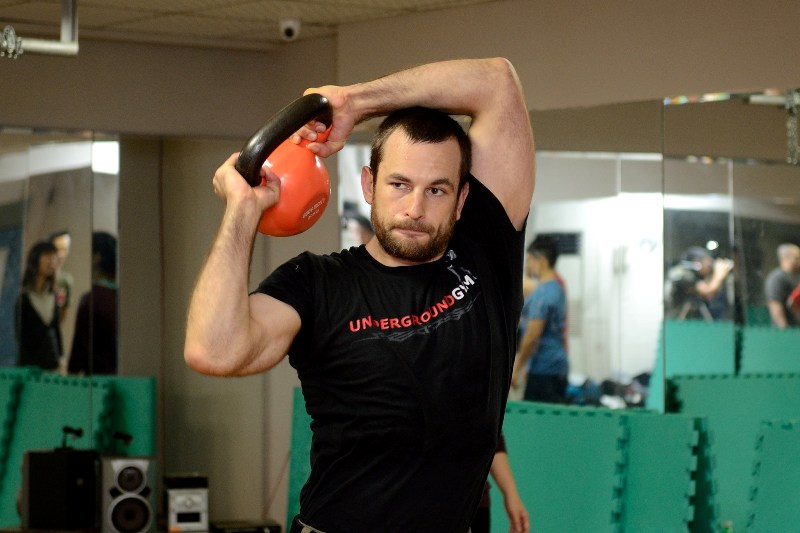
No, thank you Greg for leading from the front and providing my readers with such an outstanding interview. You put a lot of thought and WORK into this and I am very grateful to you for that. This was truly a pleasure, and I hope it reaches a lot of people who will benefit from your wisdom. And hopefully, we can connect again soon.
If you found this article helpful, please share it with your friends:
.jpg)
![]()
Health-First Fitness Coach
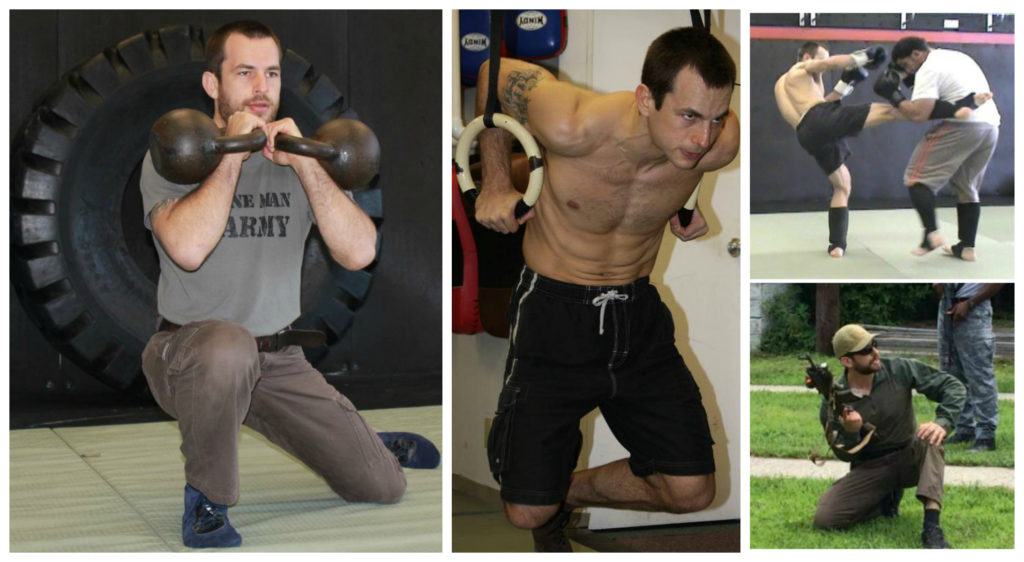
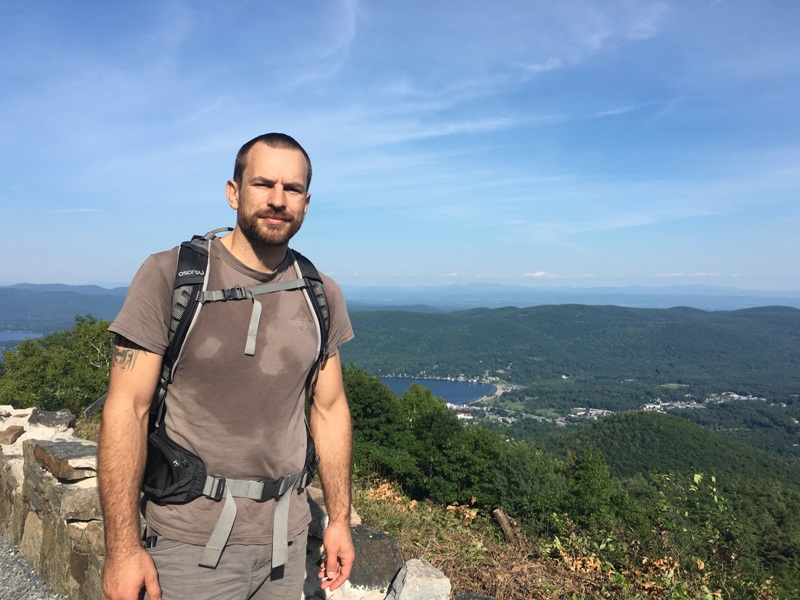
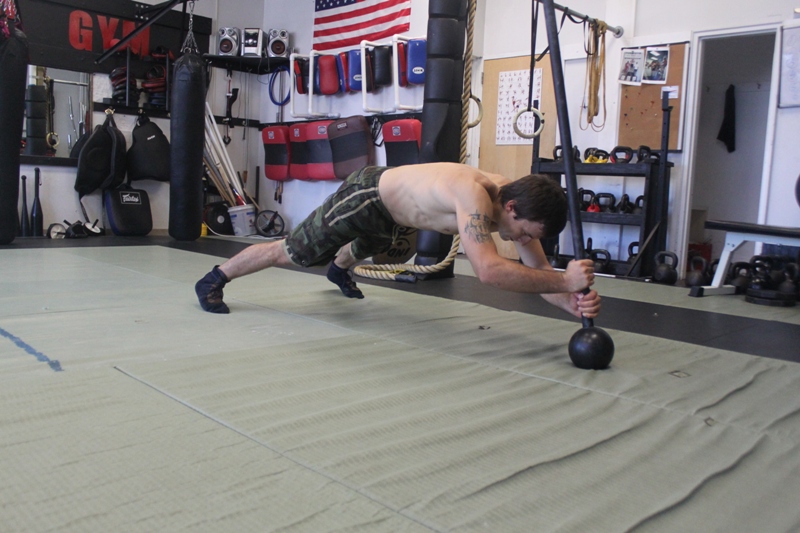
John, Great interview. I’m going to try the Combat Acrobatic Training program.
I can’t find the link to Dynamic Shooting Movement Fundamentals.
Thanks.
Thanks, Greg. I’m glad you liked it. Greg’s upcoming program, Dynamic Shooting Movement Fundamentals, will be available this summer.
BRAVO,, John..what an inspiration this man is! Many THANX for sending this along. He has given me some good insights.THANX AGAIN,JOHN.
Thanks, Darryl. It’s my pleasure!